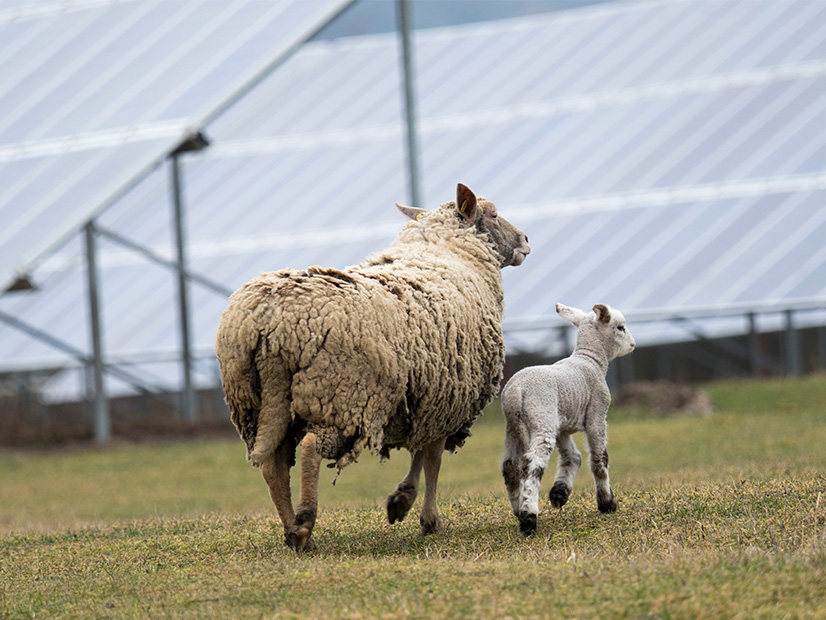
The Maine Agricultural Solar Stakeholder Group is planning to recommend that the state establish a pilot program for dual-use solar projects as part of a report due to the legislature in January.
A pilot program is one of seven overall recommendations that are in a draft version of the report released by the group for public input.
“The pilot would provide opportunities to conduct necessary research on compatible crops and other dual-use systems to determine best practices for dual use within a defined time frame or capacity limit,” the draft says. In addition, the recommendation suggested that financial incentives or location-based waivers could support projects meeting a set of dual-use criteria.
The Department of Agriculture, Conservation and Forestry (DACF), in cooperation with the Governor’s Energy Office and other state agencies, would develop the pilot program with an eye toward innovation and data collection. Authorization for pilot funding would come from the legislature.
While details of pilot project parameters are not included in the draft recommendation, Nancy McBrady, director of the DACF’s Bureau of Agriculture, Food and Rural Resources, said Thursday that the final report should identify project size and scope.
“The term ‘pilot’ can sometimes infer something small and not particularly aggressive or audacious, and … a pilot specific to dual use needs to be robust enough to prove itself and to be successful,” she said during the group’s latest meeting.
To qualify as dual use, according to the report, a solar installation must enhance agricultural productivity, have a decommissioning plan and support the viability of a farming operation.
As part of its recommendation, the group pointed to New Jersey’s dual-use program as a possible model. The state has a three-year program to develop 200 MW of dual-use solar with projects not to exceed 50 acres, but the program is not “completely defined yet,” said Ellen Griswold, policy and research director at Maine Farmland Trust.
For the final report, McBrady said, the recommendation should convey the group’s interest in the development of a pilot program that would “lead to transformational change.”
Group Insights
The DACF and Energy Office convened the group this year to recommend ways to encourage solar development and protect Maine’s agricultural resources.
In their review of the draft, some group members felt it was cautious in terms of policy considerations.
“I would have liked to see some stronger language,” Griswold said.
The report’s overall tone could focus more on maximizing benefits to agriculture instead of minimizing damage, according to Fortunat Mueller, co-founder of ReVision Energy.
“I would be more inspired by the report if we work a little bit harder to frame it as an affirmatively positive vision for the mutually co-beneficial development of solar and rural economies in Maine,” he said.
Recommendations in the report could be “stronger,” or it should have a “vision statement conclusion about what the next steps should be,” according to Kaitlin Hollinger, policy manager at BlueWave Solar. “I think what’s missing [in the report] is kind of the sense of urgency around what we’re doing.”
In addition to the dual-use pilot program, the report’s other major recommendations include:
-
-
- creation of a centralized clearinghouse of information related to approved and constructed solar projects, including information on the amount of agricultural land affected by deployed projects;
- additional study on the treatment of land enrolled in the farmland current-use taxation program when the land houses a dual-use project;
- inclusion of dual-use standards as permitting criteria in future development of processes for activities adjacent to protected natural resources;
- development of detailed hosting capacity maps to include data on which areas of the grid have capacity for additional interconnections to minimize land-use stress in any one location;
- increased technical assistance capacity and financial support for municipalities to encourage solar development; and
- consideration of agricultural siting characteristics in state-sponsored programs that support solar development through long-term contracts or other financial mechanisms.
-
The group is seeking public input on the draft report through Friday.


